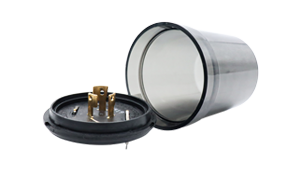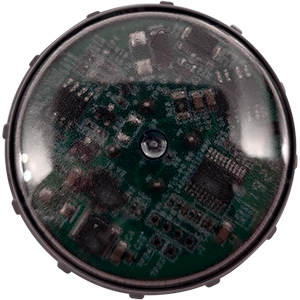How can we help you?
Your Zhaga Book 18 Series



Design Your Own PhotoControl



Your Nema PhotoControl Receptacle




JL-700 Zhaga Book 18 Photocell 4 Pin Connector:
• Comply with Zhaga Book 18 standard interface
• With light controller, it can reach IP66, single socket can reach IP20
• Small size suitable for more lamps
• Flexible installation position, can be installed on the top/bottom/side of the lamp, etc.
• More than φ40~80 models are available to meet the design and size requirements of various light controllers
• Support hot swap
• 0.8kV pulse voltage carrying capacity
• -40~70℃ working temperature range




JL-710 ZHAGA Book 18 PhotoControl Socket
• Comply with ZHAGA BOOK18 standard
• IP66 (with our ZHAGA light controller)
• Support top surface installation/side installation/upside down installation
• Small size, suitable for installation on all kinds of lamps
• The cost is much lower than choosing a dimming driver solution with secondary voltage output
• AC wide voltage input (85~305VAC)
• Passed RoHs and UL certification
• No-load power consumption ≤0.12W
• Comprehensive protection: overvoltage protection/undervoltage protection/overcurrent protection/short circuit protection/Open circuit protection/over temperature protection
• 0~10V dimming signal switch output
• CLASS II power supply
• Passed RoHs and UL certification




The JL-701A ZHAGA Book 18 Street Light PhotoController is an ultra-low-cost electronic Twist-lock type Street Light Photocell developed based on the ZHAGA BOOK 18 interface standard. It can output 0V or suspended air-conditioning light signal (OD door output) through self-sensing.
The JL-711A series of ZHAGA Book 18 Street Light Controller products are intelligent Twist-lock type light controllers developed based on the ZHAGA BOOK 18 interface standard. It uses a light sensor and can output a 0~10V dimming signal.
The JL-711N Smart Street Light Controller product is an intelligent Twist-lock type Street Light Controller developed based on the ZHAGA BOOK 18 interface standard. It can be dimmed automatically through the local ambient illuminance or through the NB-IOT remote real-time/strategy method. The dimming method supports 0~10V.
All the ZHAGA Book 18 Photocell Street Light Controller is suitable for lighting scenes such as roads, lawns, courtyards, and parks.




OEM/ODM Your Own ZHAGA Control
We provide a variety of sizes of ZHAGA Control cover and base. You can design your own PCB inside the ZHAGA light photocontroller. At present, the specifications of conventional customized products are 40mm and 80mm, but as long as you meet our MOQ, we can provide customized services. You need to provide product related technical parameters.
FAQ About Zhaga book 18 Socket
Q1:What is zhaga ?
A1:Zhaga is an industry-wide consortium aiming to standardize specifications for interfaces between LED luminaires and light engines. The aim is to permit interchangeability between products made by different manufacturers. Zhaga defines test procedures for luminaires and LED light engines so that the luminaire will accept the LED engine.
Q2:What is Zhaga Book 18 ?
A2:Zhaga Book 18 specification defines a standardised interface between outdoor LED luminaires and modules for sensing and communication. This helps bring IoT to the outdoor lighting market via smart, upgradeable, future-proof fixtures.The specification makes it easy to upgrade LED fixtures by adding or changing 24V modules that provide sensing and communication abilities. By installing smart LED lighting fixtures with sensing and communication throughout a town or city, it can significantly improve the efficiency, maintenance and running costs of outdoor lighting networks.
Additionally, by ensuring street lighting schemes are futureproofed while upgraded to LED, it means there is less need for costly retro-fitting programmes, as luminaires can be easily upgraded as technologies evolve. This is thanks to its standardised interface between a receptacle on the luminaire and a sensing and communication module that fits in to this receptacle, externally.
The electrical interface itself uses 24V DC power, supplied independently via the LED driver which is integrated within the luminaire. The interface features a 4 –pin connector and is capable of DALI control and accepts modules with a much smaller footprint than those used in other standards, for greater design flexibility.
Q3: What is Zhaga Book 18 Ed. 2.0?
A3:At the end of 2019, Zhaga Book 18 Edition 2.0 was announced. The latest edition specifies all the great features listed above, yet also includes details for a solution with two modules. It specifies power and communication aspects, in addition to the mechanical fit and electrical pins for a connectivity system as defined in Edition 1.0.Book 18 Ed. 2.0 allows any certified node to operate with any certified luminaire. Certified luminaires and sensing/communication modules are available from multiple suppliers, establishing an ecosystem of compatible products.
The book simplifies the addition of application modules such as sensors and communication nodes to LED luminaires. By assuring plug-and-play interoperability, the entire value chain benefits. It reduces complexity and adds value for the luminaire maker, installer and the specifier.Zhaga Book 18 Edition 2.0 will describe a fit system between a module for sensing and/or communication (top) and a receptacle (below). The receptacle is built into an outdoor LED luminaire. Bringing together complementary specifications from the Zhaga Consortium and D4i specifications from Digital Illumination Interface Alliance (DiiA), the interface is able to offer true plug-and-play interoperability.
This collaboration means that specifiers, purchasers, installers and end users will all benefit from easy upgrades, thanks to the socket-based connectivity system that makes adding/changing sensors or communications modules quick and simple. This ensures lumianires are able to keep up to speed with ever evolving digital networking and sensing technologies.
For manufacturers, in particularly, it means they can continue to innovate and diversify using an open global interface standard. By replacing the module rather than the entire luminaire, the luminaire is future-proofed, which is an essential requirement in Smart City lighting.
